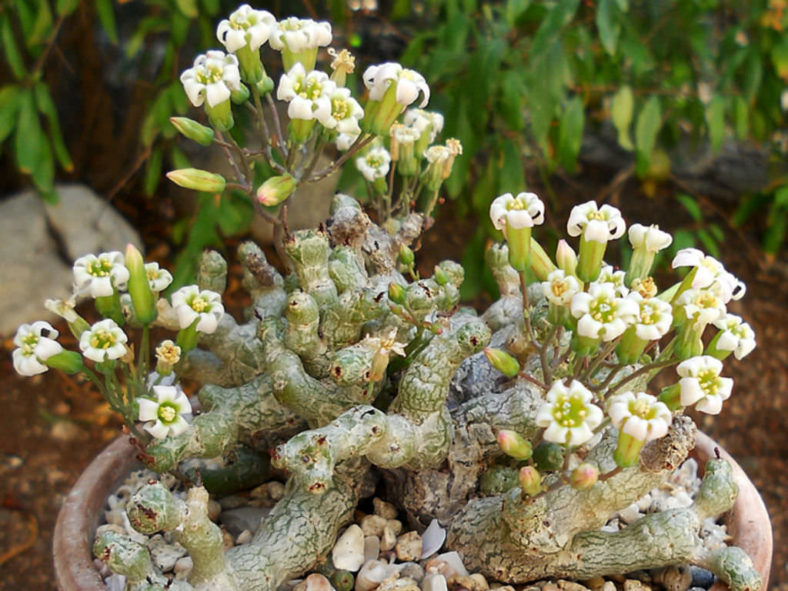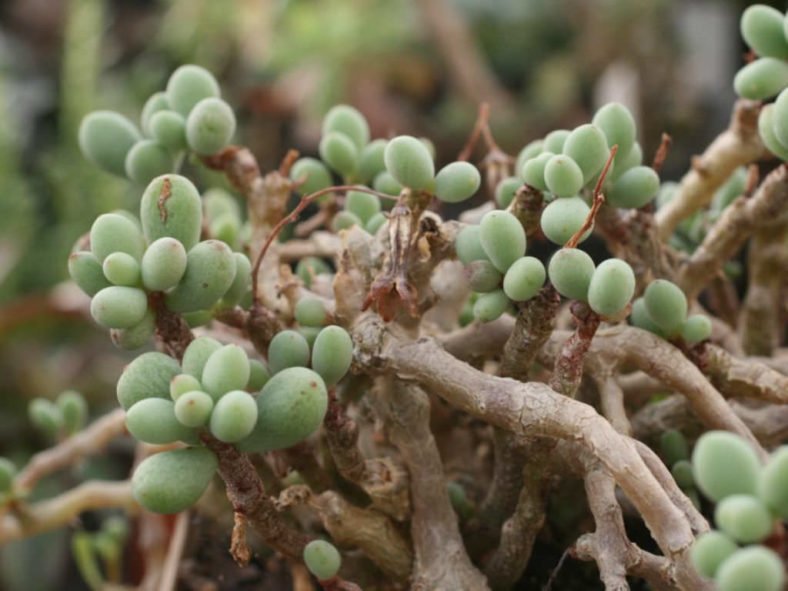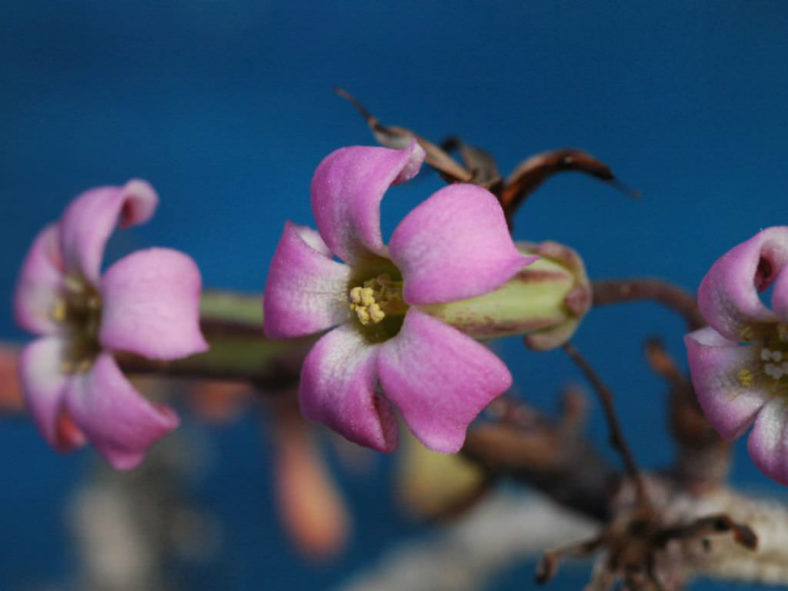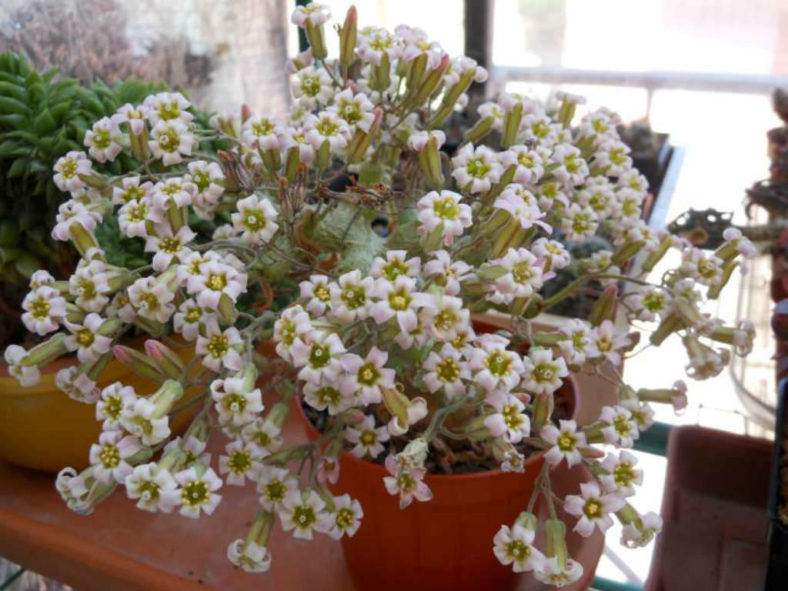Scientific Name
Tylecodon decipiens Toelken
Scientific Classification
Family: Crassulaceae
Subfamily: Kalanchoideae
Genus: Tylecodon
Etymology
The specific epithet "decipiens (de-SIP-ee-enz)" means "catching, trapping, deceiving, cheating" and probably refers to the similarity of this species with Tylecodon schaeferianus.
Origin
Tylecodon decipiens is native to southern Namibia and South Africa (Northern Cape).
Description
Tylecodon decipiens is a dwarf succulent with an irregularly shaped tuberous base that produces many branches, often forming a dense mat about 8 inches (20 cm) in diameter. The branches are smooth and grey-green with pale peeling bark and without phyllopodia. The leaves are grey-green to rarely brown and have a rounded apex, tapering base, and a flat to grooved upper surface. They can grow up to 0.5 inches (1.3 cm) long and 0.4 inches (1 cm) in diameter.
The flowers are tubular, hairy outside, and can reach up to 0.4 inches (1 cm)in length and 0.15 inches (0.4 cm) in diameter. They are yellowish-green or flushed with purple and appear in summer, when the plant sheds its leaves, on branched inflorescences that can grow up to 1.6 inches (4 cm) tall.
Tylecodon decipiens is similar to Tylecodon schaeferianus but is distinguished by its hairy corolla.

How to Grow and Care for Tylecodon decipiens
Soil: A well-draining soil mix is the key to healthy Tylecodon. Poor drainage and overwatering most commonly cause root rot in both indoor and outdoor plants.
Light: Tylecodons can survive direct sunlight exposure without problems, but they will grow beautifully in shadow.
Hardiness: Tylecodon decipiens can withstand temperatures as low as 25 to 50 °F (-3.9 to 10 °C), USDA hardiness zones 9b to 11b.
Watering: As winter is the growing season, Tylecodons require careful watering from winter until the spring. Get the soil wet, and then wait until it is dry before watering again. In the summer, reduce watering to once per month.
Fertilizing: Use liquid fertilizer for cacti and other succulents in winter.
Repotting: You do not need to repot these plants often. You can do it when the container becomes too small or shallow.
Propagation: Tylecodons can be cultivated either by seed or by cuttings.
Learn more at How to Grow and Care for Tylecodon.
Toxicity of Tylecodon decipiens
Tylecodon species are adapted to avoid animal predation being poisonous. Therefore, keep them away from children, pets, and livestock.
Links
- Back to genus Tylecodon
- Succupedia: Browse succulents by Scientific Name, Common Name, Genus, Family, USDA Hardiness Zone, Origin, or cacti by Genus
Photo Gallery
Click on a photo to see a larger version.


